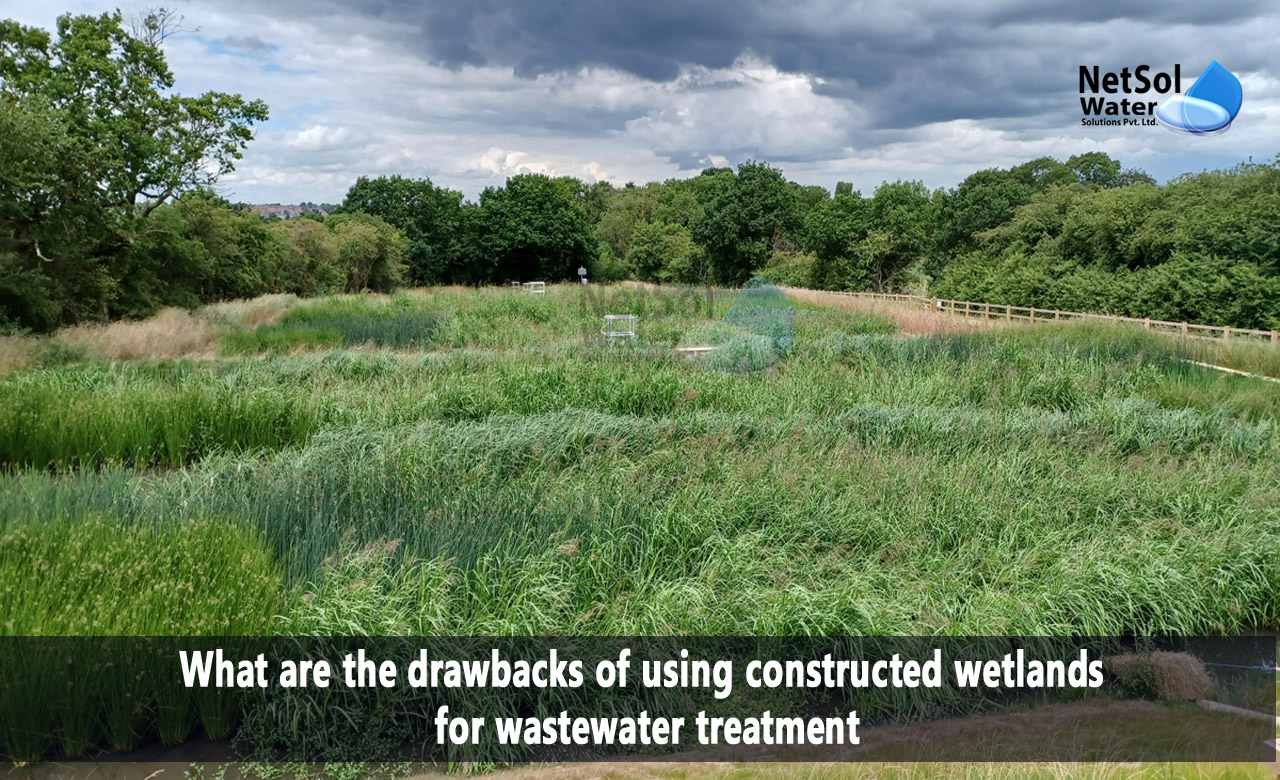What are the drawbacks of using constructed wetlands?
A wetland is a particular ecosystem that is always or occasionally submerged in water, where oxygen-free activities are predominant. What distinguishes wetlands from other landforms or bodies of water, is the presence of aquatic plants that have adapted to their particular hydric soil.
An artificial shallow basin known as a "constructed wetland" is filled with substrate, typically dirt or gravel, and is home to species that can withstand saturated conditions.
With advantages, there come some drawbacks as well. So, let’s look at the disadvantages of constructed wetlands for wastewater treatment!
· Diseases
Swamps are a type of wetland that serve as a breeding ground for mosquitoes and other diseases. In constructed wetlands, mosquito populations might be at least partially controlled.
· Using Land
Construction of artificial wetlands requires a lot of area. Many nations used to drain and fill in natural wetlands in order to allow for urban expansion. Flood protection was provided by levees, heightened river banks, and sea walls.
· Methane Production
The most potent greenhouse gas for global warming is methane, which has a capability to warm the atmosphere by 10 times, more than carbon dioxide. Through the anaerobic breakdown of organic materials, wetlands contribute around 25% of the Earth's atmospheric methane.
· Insufficient Remediation
Constructed wetlands are unable to handle today's highly hazardous effluent. Such waste needs to be processed in specialized facilities, which could affect a nature reserve's aesthetic appeal. The fauna of the reserve can be negatively impacted by residual contaminants.
Let’s look at some more drawbacks of constructed wetlands!
1: Limitations related to the use and construction of the system also apply to the use of manmade wetlands. Constructed wetlands typically need bigger land areas than traditional wastewater treatment systems.
2: Wetland treatment may be more affordable than other choices, however, this is only true in areas where land is accessible and reasonable.
3: The performance efficiency of the constructed wetland may be less consistent, than that of the conventional treatment.
4: The effectiveness of artificial wetlands as a treatment method can vary; this fluctuation can be seasonal in reaction to shifting environmental conditions, such as drought and rainfall, or spatial in connection to the local weather conditions.
5: Wetland treatment cannot be relied upon if the effluent quality must consistently meet strict discharge regulations, even though the average performance over the course of the year may be adequate, due to such variations in performance efficiency.
Despite drawbacks, Constructed Wetlands have many benefits!
Some advantages include the potential to be more cost-effective and less expensive, to construct than other forms of treatment, the low cost of operation and maintenance (required supplies and energy), and the fact that on-site labour is only needed occasionally rather than continuously, for operation and maintenance.
The constructed wetlands also accommodate flow variations, sustainably facilitate water recycling and reuse, offer good habitats for a variety of wetland creatures, and can be designed to blend in with the surrounding environment.
In addition to improving water quality, constructed wetlands can offer a variety of advantages, such as wildlife habitat that promotes tourism and other recreational activities, and aesthetic enrichment of open spaces. Because of all the aforementioned economic, ecological, and aesthetic advantages, manmade wetlands are considered to be effective environmental treatment methods and are well-liked by the general public.
What do we offer?
Although, it has been suggested that constructed wetlands be used in the treatment of various types of wastewater, the effectiveness of the system is influenced by a variety of natural and man-made factors, with emerging pollutants and contaminants, being the most challenging to get rid of through the system.
Netsol Water provide constructed wetlands as a wastewater treatment process, along with other wastewater treatment methods. Get in touch with us, describe your requirements, and we'll start working on a reliable, affordable wastewater treatment system for your industry.
For further information or to make a purchase, please contact us at +91-9650608473 or enquiry@netsolwater.com



